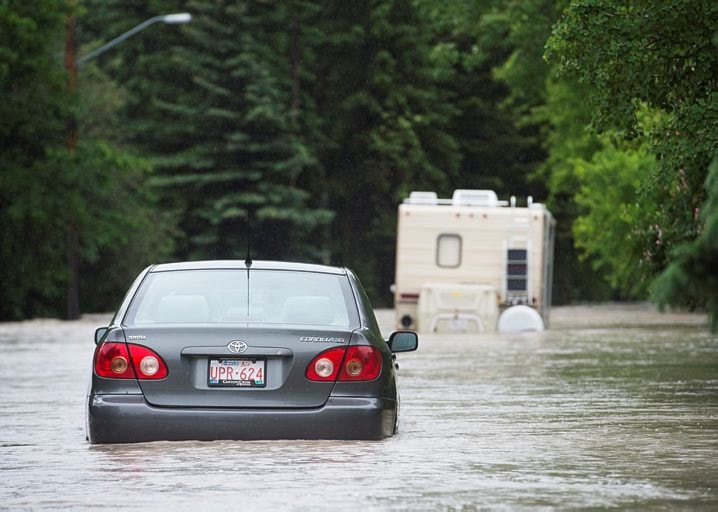In the aftermath of Hurricane Katrina in 2005 and Hurricane Sandy last year, there were reports of water-damaged vehicles being sold to unsuspecting buyers.
Thousands of cars and trucks were swallowed by Southern Alberta flood waters last week, but Randy Loyk, manager of technical services with the Alberta Motor Association, doesn’t expect any of these to be sold fraudulently.
“I would be really shocked if they are,” he said. “From what I hear, they’re just pulling them all into a staging area right now.”
From there, Loyk expects them to be written off and hauled to auto wreckers and scrap yards.
“These vehicles are damaged so badly that it’s going to take too much to get them back into shape.
“They’re not just waterlogged, but there’s silt and everything else.”
Steve Kee, director of media relations with the Insurance Bureau of Canada, estimates that 80 per cent of Alberta vehicles have comprehensive insurance that would cover flood damage. Many of those damaged by the recent weather event will be written off and removed permanently from the road, he said.
“There may be some parts that can be reused but they’re not going to re-purpose a vehicle.”
Still, both Loyk and Kee urge consumers to be vigilant when buying a used car or truck. That starts with a VIN (vehicle identification number) check that will indicate if the vehicle has been written off. The search can be conducted online by going to www.nicb.org, said Kee.
Loyk also recommends an inspection by a qualified professional, who should spot signs of water damage.
For those who want to perform their own checks, Kee offers some tips.
“If you look for water stains, or sand or silt under the carpets or floor mats, that might be an indication it’s been flooded. Look for fading on the upholstery; look for rust on some of the screws around the consoles; look for mud and grit, especially around the spare tire. Those are areas where people don’t think of necessarily cleaning them.”
Loyk agreed that silt is probably the best thing to look for, especially inside cracks and crevices.
“It’s going to be impossible to clean the silt, absolutely impossible.”
Anyone who neglects to perform their due diligence and ends up with a water-damaged vehicle in their garage faces a variety of potential problems, especially with the vehicle’s electrical system and driveline components, said Loyk.
“They’ll show up eventually.”
He added that there’s also the potential for trouble if you buy parts salvaged from flood write-offs, although most auto wreckers are careful and provide limited warranties.
“Hopefully it shouldn’t be a big concern.”
In his experiences, said Loyk, it’s rare for flooded vehicles to hit the market.
“There are very few that we see that show up.”
Rich Anderson of Red Deer Motors tells a similar story.
“I’ve never had a problem in the past,” he said, adding, however, that the occasional unscrupulous seller will try to try to sell a vehicle with hidden damage.
“With today’s technology, I don’t think there’s anything that’s going to be able to slip through the cracks.”
hrichards@www.reddeeradvocate.com
